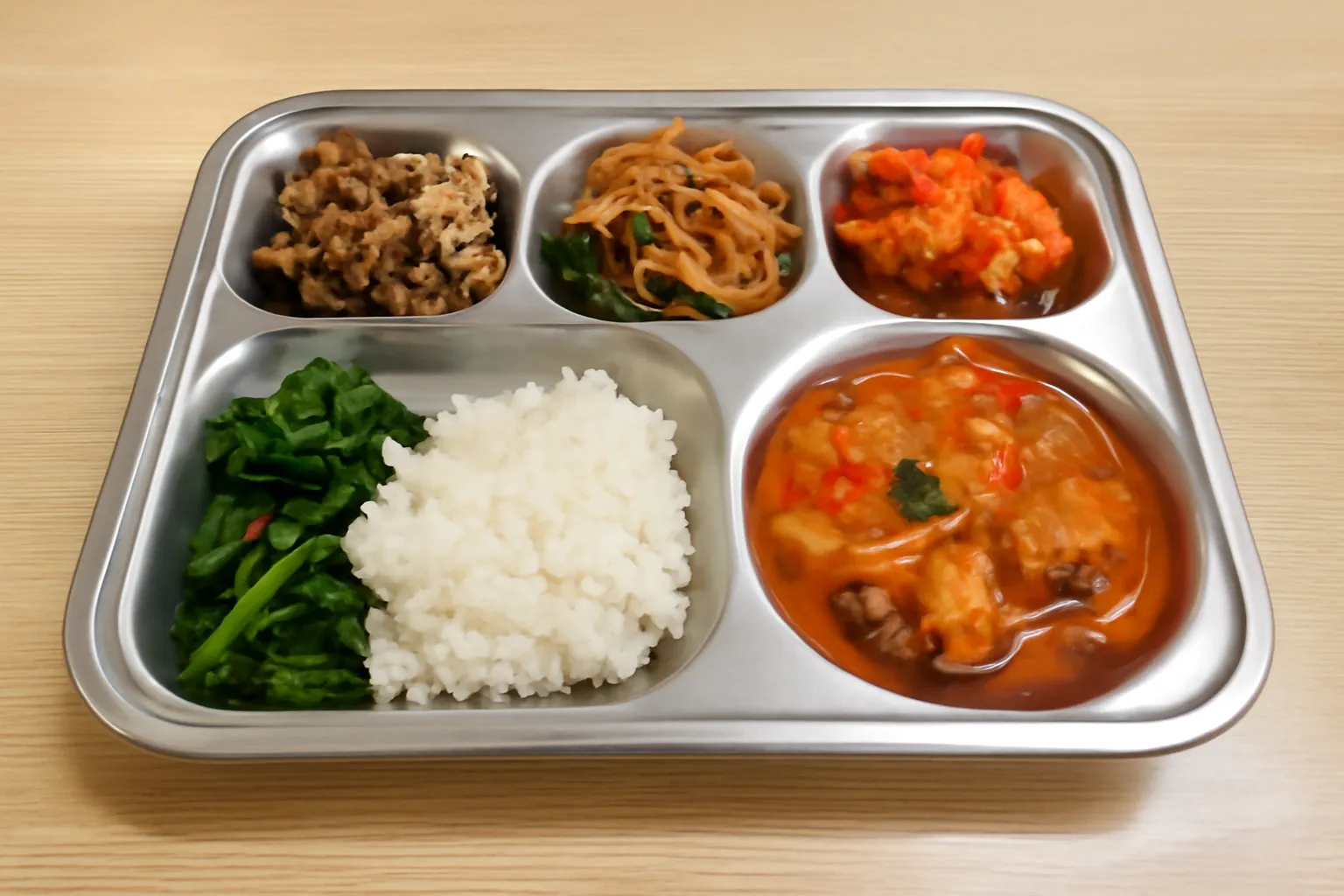Wondering what a healthy, balanced diet looks like for elementary school students? Learn about proper diet management, side dishes, and recommended menus to support their growth and energy needs.
Managing diet in elementary schools is a critical aspect of promoting healthy growth, learning, and overall well-being for young students. A balanced diet contributes not only to physical health but also plays an essential role in cognitive function and energy levels. It’s important to understand the significance of meal planning and the essential nutrients required at this stage of development.
In this article, we’ll explore the key components of elementary school diet management, suggest side dishes, and provide an example of a typical elementary school meal table. We’ll also delve into practical tips on creating a nutritious and delicious school menu that aligns with students’ dietary needs.
Elementary School Diet Management: The Basics
Elementary school children require a balanced diet to support their active lifestyles. Nutrition at this stage is crucial for their growth, cognitive development, and immune system. The diet should be rich in fruits, vegetables, proteins, and whole grains.
Key Components of a Healthy Diet for Elementary Students:
-
Proteins – Lean meats, fish, eggs, and legumes help with muscle development and repair.
-
Carbohydrates – Whole grains such as brown rice, whole wheat bread, and pasta provide the necessary energy to fuel students throughout the day.
-
Healthy Fats – Nuts, seeds, and avocados are great sources of healthy fats that contribute to brain development.
-
Fruits and Vegetables – Essential vitamins and minerals, such as Vitamin A and C, found in these foods help strengthen the immune system.
-
Dairy – Milk, cheese, and yogurt supply calcium, which is essential for bone growth and development.
It’s important for diet management to include a variety of these food groups, ensuring children get the necessary nutrients in each meal.
Why Proper Diet Management is Essential:
Properly managed meals ensure children are not only learning better but also participating actively in physical activities. Without the correct nutrients, children may feel sluggish, which can affect their mood and behavior in school. When diet is thoughtfully planned, it can prevent childhood obesity, promote good digestive health, and foster a positive relationship with food.
Explore more about Elementary School Diet Management
Elementary School Side Dishes: What to Include
Side dishes in elementary school meals are often the highlight of the meal tray, offering a variety of tastes and textures that complement the main dish. In addition to providing flavor, side dishes are a vital part of meeting the nutritional needs of children.
Healthy Side Dish Ideas:
-
Kimchi – Fermented vegetables, usually napa cabbage, packed with probiotics that aid digestion and boost immunity.
-
Japchae (Stir-fried Noodles) – Made with sweet potato noodles and various vegetables like carrots, spinach, and onions, this side dish is rich in fiber and vitamins.
-
Sautéed Greens – Spinach or kale sautéed with garlic and sesame oil, rich in iron and vitamins A and C.
-
Roasted Vegetables – Carrots, zucchini, and bell peppers roasted with olive oil, providing essential antioxidants.
-
Bulgogi – Marinated beef or chicken stir-fried with vegetables, offering protein, iron, and fiber.
Incorporating these side dishes into the daily menu provides a well-rounded meal that kids will enjoy while getting the nutrition they need. It’s also an opportunity to introduce them to different cuisines and flavors, helping them develop a diverse palate.
Why Side Dishes Matter:
Aside from enhancing flavor, side dishes make the meal visually appealing and encourage children to eat a wider variety of foods. The different colors on the plate reflect various nutrients that contribute to overall health, making them a crucial part of every school meal.
Find more delicious side dishes for school meals
Sample Elementary School Diet Menu: A Day in the Life
Planning a well-balanced diet for elementary school students involves creating a menu that includes diverse foods while focusing on providing energy and nutrients. Here’s an example of a balanced meal plan that can be followed by schools.
Elementary School Meal Menu Example:
-
Breakfast:
-
Oatmeal with fresh fruit (apples, bananas)
-
Low-fat milk or a dairy-free alternative
-
Whole wheat toast with a boiled egg
-
-
Lunch:
-
Main Steamed rice, bulgogi (marinated beef), kimchi jigae (stew)
-
Side Stir-fried japchae, sautéed spinach
-
Dessert Fresh fruit or a yogurt cup
-
-
Afternoon Snack:
-
Whole-grain crackers with cheese
-
Carrot sticks with hummus dip
-
This sample menu ensures children are receiving a balance of carbohydrates, proteins, fats, and micronutrients. It also provides variety, so students won’t get bored with repetitive meals.
Why School Menus Matter:
School menus set the foundation for children’s eating habits. Offering healthy meals from an early age helps to build long-term healthy eating patterns. When schools prioritize nutritious menus, they also teach children about the importance of eating a balanced diet.
Get more tips on planning elementary school menus
Conclusion
Elementary school diet management is key to promoting the physical, cognitive, and emotional well-being of young students. By carefully selecting meals that include a variety of nutritious foods—such as proteins, healthy fats, fruits, vegetables, and dairy—schools can help students thrive both in and out of the classroom. Offering a variety of side dishes also keeps children engaged and excited about their meals, while promoting good eating habits.
Remember, a well-balanced diet is not just about the food itself but about encouraging children to appreciate healthy, diverse meals. By establishing a solid foundation of nutrition in elementary school, we set children on the path to healthier lives.






